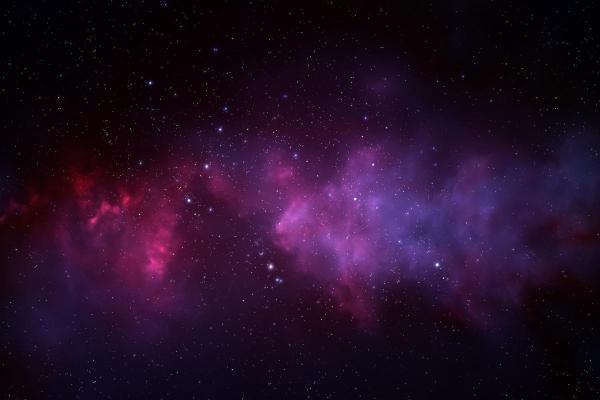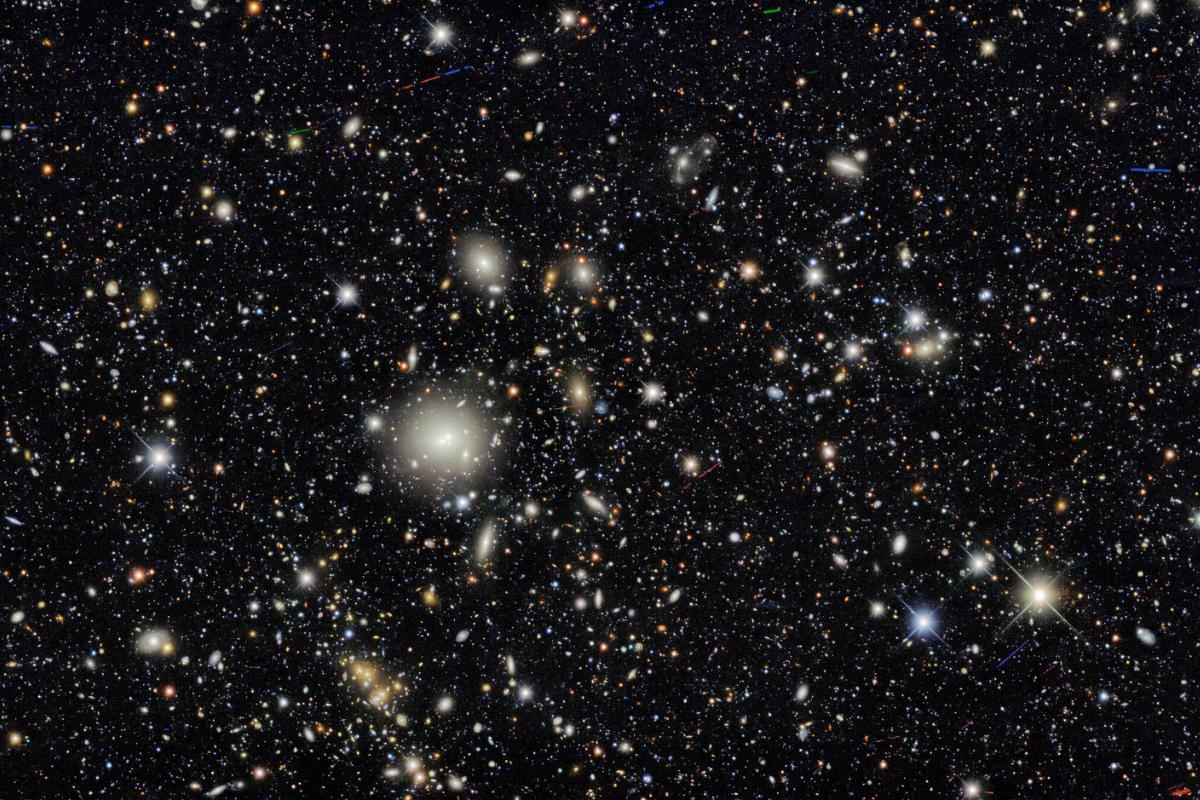What Is the Difference Between Dark Matter and Dark Energy?


Dark matter and dark energy make up 95% of our universe, yet they remain among science's biggest mysteries. Though they share the word "dark" in their names, these cosmic forces work in completely opposite ways and play very different roles in shaping our universe. Let's explore what makes each one unique and why scientists are so interested in understanding them.
In this thedailyECO article, we explore the differences between dark matter and dark energy, their roles in the universe, and address common misconceptions.
What is dark energy?
Dark energy is one of the greatest mysteries of the universe and a key concept in modern cosmology. It is a hypothetical form of energy which was proposed to explain an observation: the universe is not only expanding, but accelerating in its expansion.
Scientists made this discovery in 1998 by studying explosions of distant dying stars called Type Ia supernovae. Two separate teams of astronomers conducted the research independently and reached the same conclusion. They expected to find that gravity had slowed the universe's expansion since the Big Bang, but the data revealed the opposite effect. Something unknown was causing space itself to expand at an accelerating rate, and scientists named this force dark energy.
Scientists don't yet know what dark energy is, but they have some ideas about how it works. The main theory comes from Einstein's work. He suggested that empty space might contain its own energy, what he called the cosmological constant. This energy would work like an invisible force that pushes space apart, working against gravity's pull.
Some scientists think this could explain dark energy, while others suggest it might come from properties of space and time we haven't discovered yet, or from new types of energy fields we don't understand.
What happens to dark energy will shape the future of our universe. If dark energy stays strong or gets stronger, space will keep stretching faster and faster, possibly until everything pulls apart in what scientists call a "Big Rip." If dark energy gets weaker, gravity might win, either slowing down the universe's expansion or making it collapse in on itself in what scientists call a "Big Crunch."
How much dark energy is there in the universe?
Dark energy makes up about 68% of the universe's total content, according to current scientific measurements. This means that most of the cosmos is dominated by something we cannot directly observe, but can only detect through its effects on the universe's expansion.
To put this into perspective, current measurements show the rest of the universe consists of two main components. About 27% is dark matter, and only about 5% is "ordinary" matter, the kind that makes up planets, stars, galaxies, and everything we can see and touch.
Scientists have calculated these proportions through several precise observations. They study the cosmic microwave background radiation (the afterglow of the Big Bang), measure how galaxies are distributed across space, and use other tools like gravitational lensing. The standard model of cosmology combines these measurements to give us our best current understanding of what makes up the universe, though research continues to refine these numbers.

What is dark matter?
Dark matter is another one of the biggest mysteries in modern astronomy. Scientists think it makes up about 27% of the universe, but we can't see it because it doesn't interact with light or other forms of electromagnetic radiation. We only know it exists because of its gravitational effects on things we can see.
Scientists discovered signs of dark matter in the 1930s when astronomer Fritz Zwicky studied the Coma galaxy cluster. He found that the galaxies were moving much faster than they should based on the visible matter present. Something invisible but massive had to be providing extra gravitational pull to keep these galaxies from flying apart. Later observations of rotating galaxies showed similar puzzling results, stars at the edges were moving too fast for the visible mass to explain.
In other words, we can't see it, but we can detect its gravitational effects on several cosmic phenomena. We observe its influence in how galaxies rotate, how galaxy clusters move and stay together, how light bends around massive objects in space, and how matter was distributed in the early universe.
Scientists have proposed several ideas about what dark matter might be. The main theory suggests it's made of undiscovered particles that rarely interact with ordinary matter. Other theories suggest it might involve modifications to our understanding of gravity.
What does dark matter do to humans?
Dark matter doesn't affect humans directly, even though it passes through Earth and our bodies constantly. It doesn't interact with the atoms in your body or cause any chemical or biological reactions.
While large amounts of dark matter flow through Earth and our bodies every second, we don't feel it because it doesn't interact with electromagnetic forces (which govern most everyday interactions), and it passes straight through the spaces between and within atoms.
Differences between dark energy and dark matter
Dark matter and dark energy are two fundamental components of the universe with very different roles:
- Dark matter is a form of matter that does not interact with light, making it invisible to telescopes. Scientists can only detect it through its gravitational pull on galaxies and galaxy clusters.
- Dark energy, in contrast, is a hypothetical form of energy that seems to exist throughout space. It creates a kind of negative pressure that works against gravity, driving the universe's accelerating expansion.
These cosmic components affect the universe in opposite ways. While dark matter pulls things together through gravity and helps maintain cosmic structures, dark energy pushes space apart. Also, scientists study dark matter by observing how it affects galaxy movements and bends light, while they track dark energy by measuring the universe's increasing rate of expansion through distant supernovae and cosmic radiation patterns.
Did you know that stars, planets, and galaxies make up just 5% of the universe? Learn about these visible cosmic objects in our detailed guide.

Common misconceptions about dark matter and dark energy
Dark matter and dark energy are two fundamental components of the universe with very different roles.
Dark matter is a form of matter that does not interact with light, making it invisible to telescopes. Scientists can only detect it through its gravitational pull on galaxies and galaxy clusters. It concentrates in and around galaxies and has played a key role in forming cosmic structures since the early universe.
Dark energy, in contrast, is a hypothetical form of energy that seems to exist throughout space. Unlike dark matter, it spreads uniformly across the cosmos and maintains constant density regardless of the universe's expansion. This pushing effect has gotten stronger as the universe grows, and became the dominant force about 5 billion years ago. Unlike dark matter, which interacts with things through gravity, dark energy only seems to affect space itself.
These cosmic components affect the universe in opposite ways. While dark matter pulls things together through gravity and helps maintain cosmic structures, dark energy pushes space apart. Dark matter behaves somewhat like ordinary matter regarding temperature and pressure, and interacts through gravity and possibly other weak forces. Dark energy, however, appears to interact only with space itself, not with other forms of matter or energy.
Scientists study dark matter by observing how it affects galaxy movements and bends light, while they track dark energy by measuring the universe's increasing rate of expansion through distant supernovae and cosmic radiation patterns. Even though these forces affect the universe in opposite ways, together they make up most of what exists in the cosmos.
Did you know galaxies come in different shapes and sizes? Learn about the many kinds of galaxies dark matter helps hold together in our detailed guide.
If you want to read similar articles to What Is the Difference Between Dark Matter and Dark Energy?, we recommend you visit our Facts about Earth and the universe category.
- Meg Urry. 2011. Dark energy, the greatest mystery of science. Expansion. Available at: https://expansion.mx/tecnologia/2011/10/16/la-energia-oscura-el-misterio-mas-grande-de-la-ciencia
- Paul M. Sutter. 2023. What is dark energy? Why does it cause the universe to expand? Esquire. Available at: https://www.esquire.com/es/ciencia/a42916828/que-es-energia-oscura/







